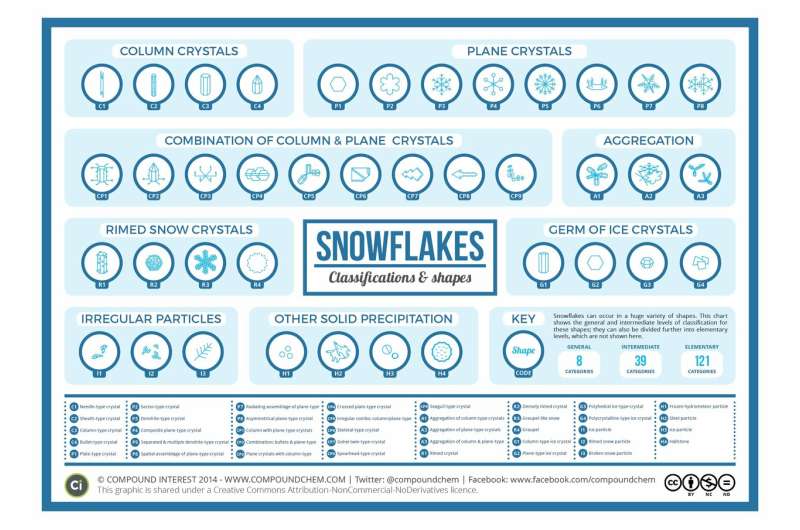Snowflakes are not as unique as you think

The delicate snow flurries that you watch fall from your window, shovel off your sidewalk, and curse when they turn into slush puddles, have quite a long adventure before they make it to the ground. A snowflake begins its descent to the tip of your nose or the top of your car from thousands of feet above the Earth. Its journey starts when ice forms around a speck of dust and gets blown by winds through the clouds, where its crystals then bloom into tiny ice stars.
And because it weighs next to nothing, it may take a snow crystal hours to drift down.
You may have heard that no two snowflakes are alike, and that's true, but they're not particularly different from each other on a molecular level, said Moneesh Upmanyu, a mechanical and industrial engineering professor at Northeastern.
He said that the shape of a snowflake is determined by the temperature and humidity of the air where it forms.
"Temperature controls how fast water molecules attach to the snowflake," he said. "Humidity controls how many water molecules saturating the air are available over the course of its growth."
Scientists have organized the crystal structures of snowflakes into eight general categories, including columns, planes, and irregular particles.
Contrary to how you make snowflakes by hand, by folding a piece of paper and wildly cutting random shapes hoping for a ornate decoration once you unfurl it, real snowflakes form their intricate patterns by releasing heat.
As they fall from the sky and accumulate water molecules, the spherical ice crystals grow dendrites, which look like branches on a tree. Ice crystals naturally form spheres, but sprout tiny needles outwards, because it's the most efficient way to diffuse heat.
"If there's low humidity, you'll mostly like see a foot shape," Upmanyu said. "But if there's low temperature, you'll see something similar to a hexagonal prism."
He said that it would be very difficult to see the distinct shape of a snowflake during a snowstorm without the assistance of a microscope or computer imaging software, which can track contours of ice crystals using a three-dimensional picture of a snowflake.
"Even in a controlled environment, you might only be able to see two different forms," Upmanyu said. "But in a snowstorm, where so much is happening, you'd only see clusters of snowflakes clumped together."
So while you probably won't be able to tell a column crystal from a planar crystal with your naked eye, you can still form snowflakes into snowballs to toss at your friends while you're snowed in.
Provided by Northeastern University





















